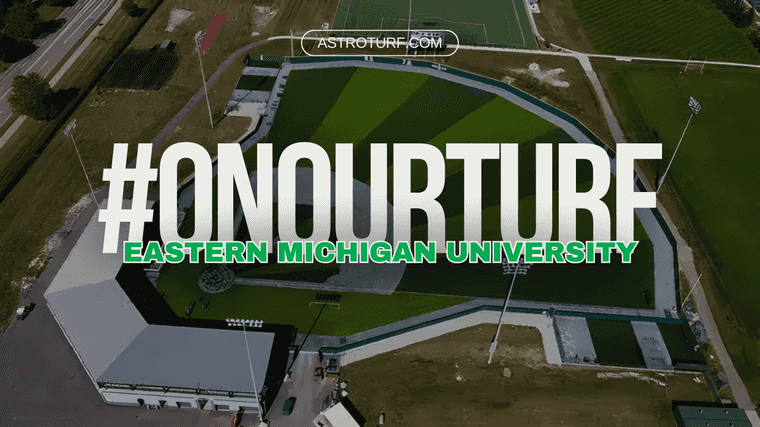The Water-Saving Potential of Synthetic Turf
Synthetic turf offers a significant advantage in water conservation, especially when compared to natural grass fields, which can require up to 1.5 million gallons of water annually to maintain optimal conditions. Research from The Ohio State University highlights the substantial water demands of natural grass, particularly during the growing season (Sherratt & Munoz 2017). By eliminating the need for irrigation, synthetic turf not only conserves millions of gallons of water but also supports sustainability goals by reducing environmental impacts associated with traditional field maintenance. This makes synthetic turf an increasingly attractive option for communities and organizations aiming to manage resources responsibly.
Based on research conducted by The Ohio State University, a natural grass sports field typically requires between 1 and 2 inches of water per week during the growing season, which usually spans from May through November. Depending on the specific conditions such as soil type, climate, and field usage, this translates to approximately 600,000 to 1.5 million gallons of water annually. The irrigation schedule would involve around 26 to 52 irrigation events each year, with each event delivering enough water to ensure the turf remains healthy and safe for athletic activities.
To put this in perspective, during each irrigation event, between 22,000 and 57,000 gallons of water might be applied, depending on whether 1 or 2 inches of water are used. The precise amount of water required can vary significantly based on local climate conditions, including temperature, wind, and humidity, which influence the rate of evapotranspiration (ET). This careful water management is crucial for maintaining the playability of the field, particularly for high-traffic areas like football or soccer fields.
One of the most significant advantages of synthetic turf is its ability to conserve water. Unlike natural grass, which requires consistent watering—often up to 1 to 2 inches of water per week—synthetic turf does not require any irrigation. This can save millions of gallons of water annually, particularly in regions that experience droughts or have water restrictions. For example, a single football field of natural grass can use between 600,000 to 1.5 million gallons of water each year. By switching to synthetic turf, facilities can eliminate this substantial water consumption, contributing to broader water conservation efforts.
Reducing Environmental Impact
In addition to conserving water, synthetic turf also reduces the environmental impact associated with maintaining natural grass fields. Traditional grass fields require significant water usage not just for maintaining the grass itself but also for managing the soil and preventing issues like erosion. Synthetic turf eliminates the need for such maintenance, reducing both water usage and the runoff that can occur from over-irrigation. This is especially critical in areas where water is scarce, and every drop counts toward maintaining local ecosystems.
Over the long term, the water savings from synthetic turf are substantial. Schools, municipalities, and sports facilities that switch to synthetic turf can expect to save hundreds of thousands to millions of gallons of water each year. These savings not only help in reducing the strain on local water supplies but also contribute to lower water bills and reduced maintenance costs. With synthetic turf, there’s no need for daily or weekly watering schedules, meaning that the initial investment in installation can lead to significant financial and environmental returns over time.
Supporting Sustainability Goals
For communities and organizations aiming to meet sustainability goals, synthetic turf offers a practical solution for water conservation. As climate change exacerbates water scarcity in many regions, the adoption of synthetic turf in place of natural grass is a proactive step toward sustainable water management. By conserving water, synthetic turf helps communities reduce their overall environmental footprint, making it an increasingly popular choice for public and private spaces alike.
Choosing synthetic turf not only conserves significant amounts of water but also contributes to a broader sustainability strategy by reducing the environmental impact of sports field maintenance. As water scarcity becomes an increasingly critical issue in many regions, the shift to synthetic turf represents a forward-thinking approach that supports both environmental stewardship and economic efficiency. By eliminating the need for irrigation, synthetic turf helps communities manage their resources more responsibly, making it a key player in the movement toward sustainable sports facilities.
Sources Cited For This Breakdown
- Sherratt, P., & Munoz, M. (2017, April 25). Irrigating soccer fields prior to play. The Ohio State University, College of Food, Agricultural, and Environmental Sciences. Retrieved from https://u.osu.edu/athleticfieldmanagement/2017/04/25/irrigating-soccer-fields-prior-to-play/
- Project Play. (n.d.). Youth sports facts. Retrieved August 14, 2024, from https://projectplay.org/youth-sports/facts/benefits#:~:text=Physical%…












